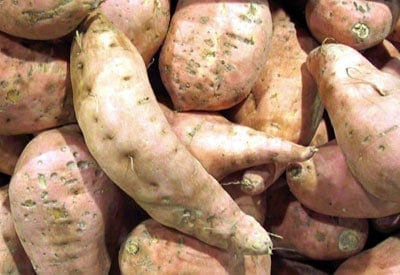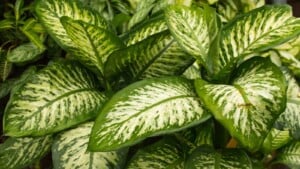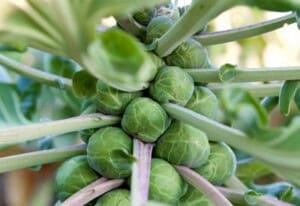Native to Central and South America, heat-loving sweet potatoes (Ipomoea batatas) are an important food crop in tropical and subtropical countries. Here in the United States, where the trendy tubers are making a culinary comeback, they will grow wherever warm temperatures and long, frost-free seasons are found. Plants are very sensitive to cold and will require frost protection in northern gardens.
Growing sweet potatoes — they are not yams — does not require garden soil rich in organic matter. In fact, a slightly acidic (pH between 5.5 and 6.5), sandy soil is preferred. Make sure the planting area is warm and frost is long gone before you set plants in the ground. Fleshy roots, or tubers, require 4 months before they are ready to harvest and attractive vines will spread 15-feet (or more!) in all direction. Give them plenty of room to roam.
Sweet potato roots are loaded with nutrition and have many health benefits. They are a good source of dietary fiber and contain super-sized amounts of vitamins A and C; minerals like iron, magnesium and potassium; and several antioxidants that help reduce the risk of cancer and prevent age related disease.
Fun fact: More than 40% of the national supply of this edible root comes from North Carolina.
Quick Guide: Planting, Growing & Harvesting Sweet Potatoes
- Requires very warm temps and a long growing season
- Plant into loose soil that drains easily; give them full sun and plenty of room to spread out
- Only plant after soil has warmed and all danger of frost has passed
- Ready to harvest in 70-140 days
- Eat only after curing, which develops a protective skin, then storing for several weeks
- Pests and diseases include alternaria leaf spot, fusarium root and stem rot, sweet potato stem borer and mice.

ORGANIC SOILS
Amendments
Planet Natural offers the organic amendments that your plants need to thrive.
View allSite Preparation
Sweet potatoes are not a potato, but rather a sweet tasting tuberous root of a tropical vine, which is closely related to morning glories. They need full sun, well-drained soil (preferably sandy loam) and plenty of room to grow. Plants are not heavy feeders, but do require a good balance of nitrogen, potassium and phosphorous. Work in a slow-release organic fertilizer before planting; too much nitrogen produces leafy growth at the expense of the roots. Later in the season, side dress plants with more organic fertilizer.
How to Plant
Plant in late spring when soil temperatures have warmed to 70 degrees. In colder climates, get a jump on the season by heating up the soil with clear plastic, which allows sunlight to heat the soil below.
Set root-bearing stems, called slips, 1 foot apart in rows spaced 3 feet apart. In raised beds, space plants 1-1/2 feet apart. Soak slips in compost tea for five minutes prior to planting to help reduce disease problems. Use Harvest Guard® row covers to add extra heat and keep out pests.
Harvesting and Storage
Harvest before frost, after foliage starts to yellow, about 70-140 days after planting. Dig tubers as you would potatoes, using a garden fork to gently loosen soil and release the sweet potatoes. Use any damaged potatoes as soon as possible, but remember that full flavor only develops over time — fresh sweet potatoes are bland.
After curing, store the tubers in a cool, dry place such as the cellar. Storage is easy for the first couple of months. After that, check often for spoilage. Do NOT keep in a plastic bag and use nicked or bruised root crops first.

Insect & Disease Problems
Sweet potatoes are subject to several types of fungus, which can damage leaves and tubers. Alternaria leaf spot appears on older leaves and has a target-like appearance. Fusarium root and stem rot damages the base of stem and the interior of the potatoes. If you see stunted plants, dropped leaves and large black spots on the tubers, you’re probably dealing with black rot.
Common insect problems include sweet potato stem borer, which can be identified by wilting leaves and holes on the stem, and white grub, which feed on the underground roots and stem.
To prevent diseases, plant varieties with multiple resistance, use certified plants and rotate sweet potatoes’ location in the garden. Rodents and mice may become a problem, as they burrow into the mounds and eat the nutritious roots.
Seed Saving Instructions
Sweet potatoes are perennial vines that are propagated vegetatively, either by shoots or from tubers. They are not grown from seed.











